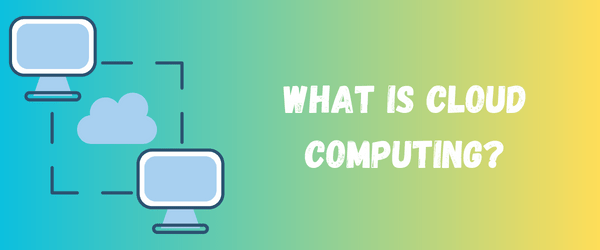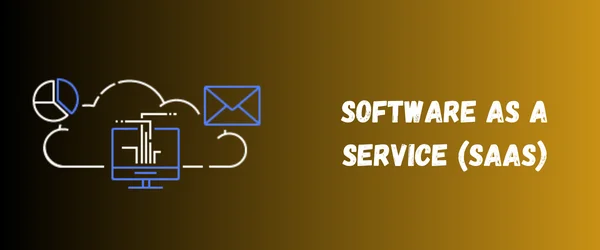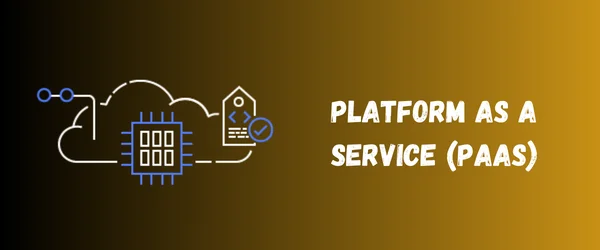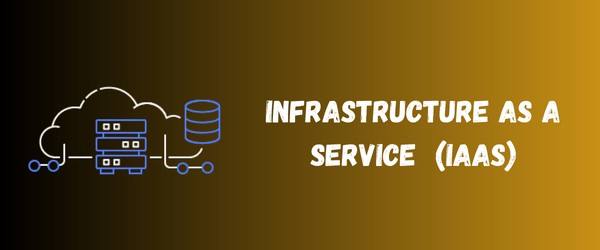What is cloud computing? How did it change the way data is stored for companies and individuals to access and how it can be cost-effective? and It can offer unparalleled flexibility, scalability, and fundamental concepts to real-world applications In this article, we will talk in detail about cloud computing benefits and types of cloud computing and more, so let’s start.

Table of Contents
Toggle1. What is cloud computing?
Cloud computing is an Internet-based service that offers flexible computing resources, billed on a pay as you go model. It enables users to effortlessly access and utilize applications, data storage, and processing power, eliminating the requirement for local infrastructure. Users can securely store and retrieve their files and applications in the virtual space provided by the cloud.
2. Benefits of Cloud Computing
Cloud computing offers numerous benefits, making it a preferred choice for businesses and individuals alike. Some of the key advantages include:
- Scalability: Cloud services can be easily scaled up or down based on user requirements, allowing for flexibility and cost savings.
- Cost-effective: Cloud computing eliminates expensive hardware and infrastructure, reducing capital expenditure.
- Accessibility: Users can access cloud resources from any device with an internet connection, enabling remote work and collaboration.
- Reliability: Cloud providers ensure high uptime and data redundancy, minimizing the risk of data loss or service disruptions.
- Security: Cloud services employ advanced security measures, including encryption and authentication, to protect sensitive data.
3. Types of Cloud Computing
Cloud computing encompasses various types, each tailored to meet specific needs. The three primary types are:
- Public Cloud: Services and infrastructure are provided by third-party cloud providers and shared among multiple users.
- Private Cloud: Resources are dedicated to a single organization, offering greater control, security, and customization options.
- Hybrid Cloud: it Combines both public and private clouds, allowing organizations to leverage the benefits of each.
3.1 Understanding Public Cloud
Public cloud services are readily accessible to users over the internet. Organizations can leverage the infrastructure and applications provided by cloud vendors, resulting in cost savings and streamlined operations. Public cloud services enable rapid scalability, empowering businesses to swiftly respond to evolving demands.
3.2 Exploring Private Cloud
Private cloud solutions are exclusively designed for single organizations, providing enhanced control over data and infrastructure. Ideal for businesses with strict security and compliance needs, private clouds can be hosted on-premises or managed by third-party providers.
3.3 Hybrid Cloud Solutions
Hybrid clouds combine public and private clouds, offering scalability, cost-effectiveness, and data/application control. They provide flexibility and optimize IT infrastructure.
4. Cloud Infrastructure and Architecture
Cloud infrastructure refers to the physical components that make up a cloud computing environment, including servers, storage, and networking devices. Cloud architecture encompasses the design and organization of these components to ensure optimal performance, reliability, and scalability.
5. Cloud Computing Service Models
where cloud computing services models are divided into three primary models such as software as a service and platform as a service and the last infrastructure as a service and they are as flowing:
5.1 Software as a Service (SaaS)
software as a service allows users to access software applications hosted on the cloud. It eliminates the need for manual installations and updates, providing seamless access to the latest features and improvements. Examples of popular SaaS applications include email clients, customer relationship management (CRM) systems, and project management tools.

5.2 Platform as a Service (PaaS)
PaaS empowers developers to build, test, and deploy applications without infrastructure concerns. It offers a complete development environment with tools, databases, and runtime. PaaS speeds up application development and reduces time-to-market.

5.3 Infrastructure as a Service (IaaS)
Infrastructure as a service or Laas offers virtualized computing resources online, allowing users to build their IT infrastructure using virtual machines, storage, and networking components. It provides businesses with maximum flexibility and control, ideal for specific hardware or software requirements.

6. Cloud Computing Deployment Models
Cloud computing can be deployed in different ways, depending on user needs and preferences. The three primary deployment models are:
- Public Cloud Deployment: Resources are provided by third-party vendors and accessible to multiple users over the Internet.
- Private Cloud Deployment: Resources are dedicated to a single organization and can be hosted on-premises or managed by a third-party provider.
- Community Cloud Deployment: Shared resources are accessible to multiple organizations with common interests or requirements, such as industry-specific compliance standards.
6.1 Public Cloud Deployment
Public cloud deployment offers a cost-effective solution for organizations that require readily available cloud resources. By leveraging the infrastructure and services provided by cloud vendors, businesses can focus on their core activities without worrying about hardware maintenance or upgrades.
6.2 Private Cloud Deployment
Private cloud deployment is ideal for organizations that prioritize security, compliance, and customization. By hosting a private cloud on-premises or with a trusted third-party provider, businesses can ensure full control over their data and infrastructure.
6.3 Community Cloud Deployment
Community cloud deployment allows multiple organizations with shared interests or compliance requirements to pool resources and create a collaborative cloud environment. It offers cost-sharing benefits and facilitates industry-specific compliance.
7. Cloud Computing Security
Cloud computing security is a critical aspect of any cloud deployment. Cloud providers implement robust security measures to protect data and infrastructure. Some common security considerations include:
- Data Encryption: Cloud providers use encryption techniques to protect sensitive data during storage and transmission.
- Access Control: Role-based access control mechanisms ensure that only authorized individuals can access specific resources and data.
- Security Audits: Regular security audits and assessments are conducted to identify vulnerabilities and ensure compliance with industry standards.
8. Data Protection in the Cloud
Data protection is a vital aspect of cloud computing. Cloud providers employ various measures to safeguard data and its including backup and disaster recovery, data redundancy, and compliance.
9. Cloud Storage and Backup
Cloud storage and backup solutions provide users with scalable and reliable data storage options. Organizations can store and retrieve data seamlessly, ensuring data availability and protection against hardware failures or natural disasters. Cloud backup services automate data backups, reducing the risk of data loss.
10. Cloud Computing in Business
cloud computing is affecting everyday life also is affecting in businesses and the main benefits are including the:
- Cost Reduction: Cloud services eliminate the need for costly infrastructure investments and maintenance, reducing operational expenses.
- Scalability: Businesses can scale their cloud resources up or down based on demand, ensuring optimal performance and cost-efficiency.
- Collaboration: Cloud-based collaboration tools enable teams to work together seamlessly, regardless of their physical location.
- Remote Work: Cloud computing enables remote work by providing secure access to business applications and data from anywhere, anytime.
11. Cloud Computing in Healthcare
Cloud computing has revolutionized the healthcare industry, enabling secure data storage, telemedicine, and improved patient care. It offers great benefits such as Efficient Data Management where Cloud storage solutions streamline healthcare data management, ensuring secure access and easy retrieval.
and Remote Patient Monitoring Cloud-based platforms facilitate remote monitoring of patients’ vital signs, enhancing healthcare delivery and reducing hospital visits Research and Analytics: Cloud computing enables researchers to analyze vast amounts of healthcare data, leading to valuable insights and improved treatments.
12. Cloud Computing in Education
Another benefit of cloud computing is education where it offers enhanced learning opportunities and administrative efficiencies based on E-learning that provides online courses and virtual classrooms such as Zoom and educational resources, We don’t forget the cloud-based tools that help students and educators such as google docs and Office 365 and last administrative efficiency that provided student information such as tasks and grades or reports.
13. Cloud Computing in E-commerce
Cloud computing has revolutionized the e-commerce industry, enabling businesses to scale operations and deliver exceptional customer experiences and the main benefits are:
Scalable Infrastructure: Cloud infrastructure allows e-commerce businesses to handle high website traffic during peak seasons without performance issues.
Personalization: Cloud-based analytics enables businesses to gather customer data and provide personalized shopping experiences.
Inventory Management: Cloud-based inventory management systems optimize stock levels, improve supply chain efficiency, and reduce costs.
14. Cloud Computing and IoT
Cloud computing and the Internet of Things (IoT) go hand in hand. Cloud platforms provide the necessary infrastructure and analytics capabilities for IoT devices.
Where Data Processing can handle the massive amounts of data generated by IoT devices, allowing for real-time analytics and actionable insights.
Scalability can scale to accommodate the growing number of IoT devices and their associated data where Connectivity enables seamless communication and integration between different IoT devices and applications.
15. Cloud Computing Challenges
While cloud computing offers numerous benefits there are some security challenges that must be fixed such as security and privacy where Storing data on the cloud raises concerns about unauthorized access and data breaches.
Where organizations must carefully select cloud providers to avoid dependency on a single vendor. Transferring data can be affected by bandwidth limitations when uploading and transferring a large amount of data to the cloud can be time-consuming and bandwidth-intensive
👉 If you are interested you can see this article about how to choose a domain name.
Conclusion
Cloud computing revolutionized the digital landscape, providing unmatched opportunities for businesses and individuals. Its flexibility, scalability, and cost-effectiveness have made it an essential component of modern technology. From public to private clouds, SaaS to IaaS, and e-commerce to healthcare, the cloud is transforming industries and driving innovation. Gain a competitive edge in this fast-paced digital era by mastering cloud computing’s fundamentals and exploring real-world applications. Unleash its full potential and stay ahead in this evolving landscape.
Finally, I hope my article added some valuable information to you. If you have some questions? Let me know in the comments below. I’ll try my best to answer them.




